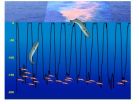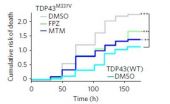(Press-News.org) (Boston)--Intimate partner violence (IPV) is a significant health issue faced by women veterans, but little has been known up until now about their preferences for IPV-related care. A new study has found that most of these women support routine screening for IPV and want options, follow-up support, transparent documentation and Veterans Health Administration (VHA) and community resources. These findings appear in the journal Research in Nursing and Health.
Although women of all socio-demographic groups are at risk for IPV, population-based research suggests that women veterans are at higher risk for IPV than non-veteran women. In order to better understand their attitudes and preferences regarding IPV screening and response issues, five focus groups were conducted with 24 female patients of the Veterans Health Administration (VHA) with and without a lifetime history of IPV.
"In general, we found that women veterans support routine IPV screening and comprehensive IPV-related care within the VHA," explained corresponding author Katherine Iverson, PhD, assistant professor of psychiatry at Boston University School of Medicine (BUSM) and a clinical research psychologist at the VA Boston Healthcare System and the VA's National Center for PTSD. "As we move forward with routine IPV screening, it is important that these women are offered options in terms of what, how, when, and to whom to disclose and follow-up support. In addition, these women must be approached with sensitivity and connectedness with the understanding that different patients are in different stages of recovery."
Overall, women indicated that the HITS screening tool [the four-item screening tool (Hurt/Insult/Threaten/Scream) tested by Iverson and her colleagues that can be used in under four minutes] could be useful in helping VHA providers identify women who have experienced IPV. Using the existing clinical reminder dialogue system a notification could be imbedded into a patients' electronic medical records (EMR's) to use HITS to assess IPV, ensuring that screening is occurring. This would be similar to clinical EMRs for mammograms and pap smears.
The researchers point out that use of EMRs may be a potential barrier to disclose for some women because of privacy and confidentiality concerns. Study participants suggested that this barrier can be overcome by providers' use of transparency with respect to documentation. For example, providers can talk with their patients about what they would like to document in the EMR and problem-solve any concerns the patients may raise. In addition, providers can discuss privacy protections in place at VHA and engage patients in conversations about the advantages and disadvantages of documentation. EMRs can also prompt providers to engage in other procedures that were recommended by participants in this study, such as offering information about VHA and community resources.
The researchers believe the VHA has a timely opportunity and is well-positioned to serve as a national model for the implementation of best practices for IPV screening and response. "By incorporating the recommendations expressed by women in this study, VHA and other health care providers may increase the likelihood of identifying IPV, improve patient satisfaction with care, connect veterans with the services they need, reduce healthcare costs to the patient and system at large, and ultimately improve the health and well-being of female veteran patients," added Iverson.
INFORMATION:
This research was supported by the Department of Veterans Affairs, Veterans Health Administration, Health Services Research and Development (HSR&D) as part of Iverson's HSR&D Career Development Award (CDA-2; 10-029) and the BUSM Lynne Stevens Award, which Iverson received in 2011.
Women veterans want options, follow up support when dealing with intimate partner violence
2014-07-03
ELSE PRESS RELEASES FROM THIS DATE:
Hot Pot with chicken causes campylobacter infections in Switzerland
2014-07-03
This news release is available in German and French. In Switzerland, between 7000 and 8000 persons fall ill with a campylobacter infection annually. This makes it the most frequent bacterial disease transmitted through food. Contamination of chicken meat with campylobacter bacteria during the slaughtering process is one of the known causes of the infection. An increase of campylobacteriosis case numbers is being observed throughout Europe. Human cases of campylobacteriosis must be reported to the relevant authorities in Switzerland.
In Switzerland, an unusual increase ...
Low brain protein levels associated with neurodegeneration
2014-07-03
Persons with reduced levels of the TREM2 protein could be at greater risk of developing neurodegenerative diseases such as Alzheimer's disease or frontotemporal dementia, according to an international study which included the participation of the Universitat Autònoma de Barcelona and the Sant Pau Biomedical Research Institute (IIB Sant Pau).
The study, published in Science Translational Medicine, reveals the molecular mechanism by which the mutated forms of this protein prevent the amyloid waste cleaning process from functioning correctly and detects a lower level of ...
Whales as ecosystem engineers
2014-07-03
"Consider the subtleness of the sea; how its most dreaded creatures glide under water, unapparent for the most part," wrote Herman Melville in Moby Dick. Today, we no longer dread whales, but their subtlety remains. "For a long time, whales have been considered too rare to make much of a difference in the oceans," notes University of Vermont conservation biologist Joe Roman. That was a mistake.
In a new paper, Roman and a team of biologists have tallied several decades of research on whales from around the world; it shows that whales, in fact, make a huge difference—they ...
No two lark sparrows are alike (at least when it comes to migration habits)
2014-07-03
A new paper by Dr. Jeremy Ross from the University of Oklahoma describes the use of tiny devices strapped to birds' backs called geolocators, which capture the individual migration routes of lark sparrows in North America. By sensing the light levels, these backpacks can pinpoint the location of a bird anywhere in the world, even if retrieving the data-logger can sometimes pose a major problem.
This study, published in the online journal Animal Migration, mapped for the first time the routes traveled by three lark sparrows after they left their breeding grounds in Ohio. ...
Consider water use in climate change policies, advise Australian researchers
2014-07-03
There's more to trying to slow down climate change than just cutting greenhouse gas emissions. Technology, policies or plans that aim to do so should also take environmental factors such as water usage into account. A more integrated approach might make some options considerably more attractive than others, especially when implemented in arid countries such as Australia, advise Philip Wallis of Monash University in Australia and colleagues, in an article in Springer's journal Climatic Change.
The researchers considered the example of Australia to show how water usage ...
Jump to it! A frog's leaping style depends on the environment
2014-07-03
VIDEO:
Tree frogs reach great heights with their jumps, but do not cover much distance.
Click here for more information.
A frog's jump is not as simple as it seems....Australian scientists have discovered that different species adopt different jumping styles depending on their environment.
Lead researcher, Miss Marta Vidal-Garcia ( PhD candidate, Australian National University ), found that tree dwelling frogs reached great heights but didn't cover much distance with their ...
Study finds higher risk for celiac disease in some children
2014-07-03
AURORA, Colo. (July 3, 2014) – Physicians from the University of Colorado School of Medicine in collaboration with an international team of researchers have demonstrated that screening of genetically susceptible infants can lead to the diagnosis of celiac disease at a very early age.
The collaborative group studied 6,403 children with specific genetic markers from birth to identify the factors involved in the development of both celiac disease and type 1 diabetes. The children are from the United States, Finland, Germany and Sweden and are part of The Environmental Determinants ...
Biological signal processing: Body cells -- instrumentalists in a symphony orchestra
2014-07-03
Every organism has one aim: to survive. Its body cells all work in concert to keep it alive. They do so through finely tuned means of communication. Together with cooperation partners from Berlin and Cambridge, scientists at the Luxembourg Centre for Systems Biomedicine (LCSB) of the University of Luxembourg have now successfully revealed for the first time the laws by which cells translate signals from their surroundings into internal signals. Like an isolated note in a symphony orchestra, an isolated signal in the cell is of subordinate importance. "What is important ...
A CNIO team reduces the size of the human genome to 19,000 genes
2014-07-03
How nutrients are metabolised and how neurons communicate in the brain are just some of the messages coded by the 3 billion letters that make up the human genome. The detection and characterisation of the genes present in this mass of information is a complex task that has been a source of ongoing debate since the first systematic attempts by the Human Genome Project more than ten years ago.
A study led by Alfonso Valencia, Vice-Director of Basic Research at the Spanish National Cancer Research Centre (CNIO) and head of the Structural Computational Biology Group, and ...
Could boosting brain cells' appetites fight disease? New research shows promise
2014-07-03
ANN ARBOR, Mich. — Deep inside the brains of people with dementia and Lou Gehrig's disease, globs of abnormal protein gum up the inner workings of brain cells – dooming them to an early death.
But boosting those cells' natural ability to clean up those clogs might hold the key to better treatment for such conditions.
That's the key finding of new research from a University of Michigan Medical School physician scientist and his colleagues in California and the United Kingdom. They reported their latest findings this week in the journal Nature Chemical Biology.
Though ...




